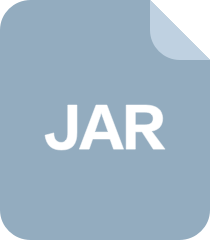# ð¾ PyTorch-Transformers
[](https://circleci.com/gh/huggingface/pytorch-transformers)
PyTorch-Transformers (formerly known as `pytorch-pretrained-bert`) is a library of state-of-the-art pre-trained models for Natural Language Processing (NLP).
The library currently contains PyTorch implementations, pre-trained model weights, usage scripts and conversion utilities for the following models:
1. **[BERT](https://github.com/google-research/bert)** (from Google) released with the paper [BERT: Pre-training of Deep Bidirectional Transformers for Language Understanding](https://arxiv.org/abs/1810.04805) by Jacob Devlin, Ming-Wei Chang, Kenton Lee and Kristina Toutanova.
2. **[GPT](https://github.com/openai/finetune-transformer-lm)** (from OpenAI) released with the paper [Improving Language Understanding by Generative Pre-Training](https://blog.openai.com/language-unsupervised/) by Alec Radford, Karthik Narasimhan, Tim Salimans and Ilya Sutskever.
3. **[GPT-2](https://blog.openai.com/better-language-models/)** (from OpenAI) released with the paper [Language Models are Unsupervised Multitask Learners](https://blog.openai.com/better-language-models/) by Alec Radford*, Jeffrey Wu*, Rewon Child, David Luan, Dario Amodei** and Ilya Sutskever**.
4. **[Transformer-XL](https://github.com/kimiyoung/transformer-xl)** (from Google/CMU) released with the paper [Transformer-XL: Attentive Language Models Beyond a Fixed-Length Context](https://arxiv.org/abs/1901.02860) by Zihang Dai*, Zhilin Yang*, Yiming Yang, Jaime Carbonell, Quoc V. Le, Ruslan Salakhutdinov.
5. **[XLNet](https://github.com/zihangdai/xlnet/)** (from Google/CMU) released with the paper [âXLNet: Generalized Autoregressive Pretraining for Language Understanding](https://arxiv.org/abs/1906.08237) by Zhilin Yang*, Zihang Dai*, Yiming Yang, Jaime Carbonell, Ruslan Salakhutdinov, Quoc V. Le.
6. **[XLM](https://github.com/facebookresearch/XLM/)** (from Facebook) released together with the paper [Cross-lingual Language Model Pretraining](https://arxiv.org/abs/1901.07291) by Guillaume Lample and Alexis Conneau.
These implementations have been tested on several datasets (see the example scripts) and should match the performances of the original implementations (e.g. ~93 F1 on SQuAD for BERT Whole-Word-Masking, ~88 F1 on RocStories for OpenAI GPT, ~18.3 perplexity on WikiText 103 for Transformer-XL, ~0.916 Peason R coefficient on STS-B for XLNet). You can find more details on the performances in the Examples section of the [documentation](https://huggingface.co/pytorch-transformers/examples.html).
| Section | Description |
|-|-|
| [Installation](#installation) | How to install the package |
| [Quick tour: Usage](#quick-tour-usage) | Tokenizers & models usage: Bert and GPT-2 |
| [Quick tour: Fine-tuning/usage scripts](#quick-tour-of-the-fine-tuningusage-scripts) | Using provided scripts: GLUE, SQuAD and Text generation |
| [Migrating from pytorch-pretrained-bert to pytorch-transformers](#Migrating-from-pytorch-pretrained-bert-to-pytorch-transformers) | Migrating your code from pytorch-pretrained-bert to pytorch-transformers |
| [Documentation](https://huggingface.co/pytorch-transformers/) | Full API documentation and more |
## Installation
This repo is tested on Python 2.7 and 3.5+ (examples are tested only on python 3.5+) and PyTorch 0.4.1 to 1.1.0
### With pip
PyTorch-Transformers can be installed by pip as follows:
```bash
pip install pytorch-transformers
```
### From source
Clone the repository and run:
```bash
pip install [--editable] .
```
### Tests
A series of tests is included for the library and the example scripts. Library tests can be found in the [tests folder](https://github.com/huggingface/pytorch-transformers/tree/master/pytorch_transformers/tests) and examples tests in the [examples folder](https://github.com/huggingface/pytorch-transformers/tree/master/examples).
These tests can be run using `pytest` (install pytest if needed with `pip install pytest`).
You can run the tests from the root of the cloned repository with the commands:
```bash
python -m pytest -sv ./pytorch_transformers/tests/
python -m pytest -sv ./examples/
```
## Quick tour
Let's do a very quick overview of PyTorch-Transformers. Detailed examples for each model architecture (Bert, GPT, GPT-2, Transformer-XL, XLNet and XLM) can be found in the [full documentation](https://huggingface.co/pytorch-transformers/).
```python
import torch
from pytorch_transformers import *
# PyTorch-Transformers has a unified API
# for 6 transformer architectures and 27 pretrained weights.
# Model | Tokenizer | Pretrained weights shortcut
MODELS = [(BertModel, BertTokenizer, 'bert-base-uncased'),
(OpenAIGPTModel, OpenAIGPTTokenizer, 'openai-gpt'),
(GPT2Model, GPT2Tokenizer, 'gpt2'),
(TransfoXLModel, TransfoXLTokenizer, 'transfo-xl-wt103'),
(XLNetModel, XLNetTokenizer, 'xlnet-base-cased'),
(XLMModel, XLMTokenizer, 'xlm-mlm-enfr-1024')]
# Let's encode some text in a sequence of hidden-states using each model:
for model_class, tokenizer_class, pretrained_weights in MODELS:
# Load pretrained model/tokenizer
tokenizer = tokenizer_class.from_pretrained(pretrained_weights)
model = model_class.from_pretrained(pretrained_weights)
# Encode text
input_ids = torch.tensor([tokenizer.encode("Here is some text to encode")])
with torch.no_grad():
last_hidden_states = model(input_ids)[0] # Models outputs are now tuples
# Each architecture is provided with several class for fine-tuning on down-stream tasks, e.g.
BERT_MODEL_CLASSES = [BertModel, BertForPreTraining, BertForMaskedLM, BertForNextSentencePrediction,
BertForSequenceClassification, BertForMultipleChoice, BertForTokenClassification,
BertForQuestionAnswering]
# All the classes for an architecture can be initiated from pretrained weights for this architecture
# Note that additional weights added for fine-tuning are only initialized
# and need to be trained on the down-stream task
tokenizer = BertTokenizer.from_pretrained('bert-base-uncased')
for model_class in BERT_MODEL_CLASSES:
# Load pretrained model/tokenizer
model = model_class.from_pretrained('bert-base-uncased')
# Models can return full list of hidden-states & attentions weights at each layer
model = model_class.from_pretrained(pretrained_weights,
output_hidden_states=True,
output_attentions=True)
input_ids = torch.tensor([tokenizer.encode("Let's see all hidden-states and attentions on this text")])
all_hidden_states, all_attentions = model(input_ids)[-2:]
# Models are compatible with Torchscript
model = model_class.from_pretrained(pretrained_weights, torchscript=True)
traced_model = torch.jit.trace(model, (input_ids,))
# Simple serialization for models and tokenizers
model.save_pretrained('./directory/to/save/') # save
model = model_class.from_pretrained('./directory/to/save/') # re-load
tokenizer.save_pretrained('./directory/to/save/') # save
tokenizer = tokenizer_class.from_pretrained(pretrained_weights)
# SOTA examples for GLUE, SQUAD, text generation...
```
## Quick tour of the fine-tuning/usage scripts
The library comprises several example scripts with SOTA performances for NLU and NLG tasks:
- `run_glue.py`: an example fine-tuning Bert, XLNet and XLM on nine different GLUE tasks (*sequence-level classification*)
- `run_squad.py`: an example fine-tuning Bert, XLNet and XLM on the question answering dataset SQuAD 2.0 (*token-level classification*)
- `run_generation.py`: an example using GPT, GPT-2, Transformer-XL and XLNet for conditional language generation
- other model-specific examples (see the documentation).
Here are three quick usage examples for these s
没有合适的资源?快使用搜索试试~ 我知道了~
温馨提示
【AAAI2023】视觉辅助的常识知识获取Visually Grounded Commonsense Knowledge Acquisition 论文源码。大规模的常识知识库为广泛的AI应用提供了能力,其中常识知识的自动提取(CKE)是一个基本和具有挑战性的问题。文本中的CKE因其固有的稀疏性和文本中常识的报道偏差而闻名。另一方面,视觉感知包含了丰富的关于现实世界实体的常识知识,如(人、能拿的东西、瓶子),这可以作为获得基础常识知识的有前途的来源。在这项工作中,我们提出CLEVER,它将CKE描述为一个远端监督的多实例学习问题,其中模型学习从一组关于实体对的图像中总结常识关系,而不需要对图像实例进行任何人为注释。为了解决这一问题,CLEVER利用视觉语言预训练模型来深入理解袋子中的每个图像,并从袋子中选择信息实例,通过一种新颖的对比注意力机制来总结常识性的实体关系。综合实验结果表明,CLEVER方法能够较好地提取常识性知识,比基于语言模型的预训练方法提高了3.9个AUC点和6.4个mAUC点。预测的常识得分与人的判断具有较强的相关性,斯皮尔曼系数为0.78。提取出来的常识也可以根植于具
资源推荐
资源详情
资源评论
收起资源包目录
 AAAI2023Visually Grounded Commonsense Knowledge Acquisition 源码 (221个子文件)
AAAI2023Visually Grounded Commonsense Knowledge Acquisition 源码 (221个子文件)  .coveragerc 215B
.coveragerc 215B huggingface.css 4KB
huggingface.css 4KB code-snippets.css 257B
code-snippets.css 257B Dockerfile 194B
Dockerfile 194B .gitignore 1KB
.gitignore 1KB .gitignore 1KB
.gitignore 1KB .gitignore 43B
.gitignore 43B .gitignore 6B
.gitignore 6B .gitmodules 205B
.gitmodules 205B MANIFEST.in 16B
MANIFEST.in 16B cocoEvalCapDemo.ipynb 204KB
cocoEvalCapDemo.ipynb 204KB Comparing-TF-and-PT-models-SQuAD.ipynb 203KB
Comparing-TF-and-PT-models-SQuAD.ipynb 203KB Comparing-TF-and-PT-models-MLM-NSP.ipynb 169KB
Comparing-TF-and-PT-models-MLM-NSP.ipynb 169KB Comparing-PT-and-TF-models.ipynb 90KB
Comparing-PT-and-TF-models.ipynb 90KB Comparing-TF-and-PT-models.ipynb 61KB
Comparing-TF-and-PT-models.ipynb 61KB spice-1.0.jar 18.84MB
spice-1.0.jar 18.84MB meteor-1.5.jar 6.03MB
meteor-1.5.jar 6.03MB stanford-corenlp-3.4.1.jar 5.65MB
stanford-corenlp-3.4.1.jar 5.65MB framework.jpg 423KB
framework.jpg 423KB custom.js 2KB
custom.js 2KB captions_val2014.json 28.33MB
captions_val2014.json 28.33MB caption_flickr30k.json 24.81MB
caption_flickr30k.json 24.81MB captions_val2014_fakecap_results.json 82KB
captions_val2014_fakecap_results.json 82KB dev-v2.0-small.json 9KB
dev-v2.0-small.json 9KB LICENSE 11KB
LICENSE 11KB LICENSE 1KB
LICENSE 1KB LICENSE 1KB
LICENSE 1KB LICENSE 1KB
LICENSE 1KB Makefile 585B
Makefile 585B VinVL_MODEL_ZOO.md 22KB
VinVL_MODEL_ZOO.md 22KB README.md 19KB
README.md 19KB MODEL_ZOO.md 15KB
MODEL_ZOO.md 15KB README.md 6KB
README.md 6KB VinVL_DOWNLOAD.md 5KB
VinVL_DOWNLOAD.md 5KB quickstart.md 5KB
quickstart.md 5KB README.md 5KB
README.md 5KB migration.md 4KB
migration.md 4KB README.md 3KB
README.md 3KB SECURITY.md 3KB
SECURITY.md 3KB README.md 2KB
README.md 2KB DOWNLOAD.md 2KB
DOWNLOAD.md 2KB README.md 2KB
README.md 2KB INSTALL.md 904B
INSTALL.md 904B INSTALL.md 713B
INSTALL.md 713B CODE_OF_CONDUCT.md 444B
CODE_OF_CONDUCT.md 444B DATASET.md 180B
DATASET.md 180B test_sentencepiece.model 247KB
test_sentencepiece.model 247KB Calibre-Regular.otf 49KB
Calibre-Regular.otf 49KB Calibre-Medium.otf 47KB
Calibre-Medium.otf 47KB Calibre-Thin.otf 46KB
Calibre-Thin.otf 46KB oscar.PNG 332KB
oscar.PNG 332KB pretrain_corpus.PNG 171KB
pretrain_corpus.PNG 171KB oscar_logo.png 118KB
oscar_logo.png 118KB warmup_cosine_hard_restarts_schedule.png 22KB
warmup_cosine_hard_restarts_schedule.png 22KB warmup_cosine_warm_restarts_schedule.png 22KB
warmup_cosine_warm_restarts_schedule.png 22KB warmup_cosine_schedule.png 17KB
warmup_cosine_schedule.png 17KB warmup_linear_schedule.png 16KB
warmup_linear_schedule.png 16KB warmup_constant_schedule.png 10KB
warmup_constant_schedule.png 10KB modeling_bert.py 66KB
modeling_bert.py 66KB modeling_xlnet.py 62KB
modeling_xlnet.py 62KB run_vqa.py 61KB
run_vqa.py 61KB modeling_transfo_xl.py 57KB
modeling_transfo_xl.py 57KB run_gqa.py 55KB
run_gqa.py 55KB modeling_bert.py 49KB
modeling_bert.py 49KB run_nlvr.py 48KB
run_nlvr.py 48KB run_captioning.py 45KB
run_captioning.py 45KB modeling_xlm.py 44KB
modeling_xlm.py 44KB modeling_utils.py 43KB
modeling_utils.py 43KB modeling_utils.py 42KB
modeling_utils.py 42KB utils_squad.py 41KB
utils_squad.py 41KB cbs.py 39KB
cbs.py 39KB oscar_tsv.py 36KB
oscar_tsv.py 36KB modeling_gpt2.py 36KB
modeling_gpt2.py 36KB run_bag.py 35KB
run_bag.py 35KB run_instance_pred_cls.py 35KB
run_instance_pred_cls.py 35KB modeling_openai.py 34KB
modeling_openai.py 34KB run_retrieval.py 34KB
run_retrieval.py 34KB modeling_clever.py 31KB
modeling_clever.py 31KB finetune_dataset.py 30KB
finetune_dataset.py 30KB run_squad.py 28KB
run_squad.py 28KB simple_lm_finetuning.py 27KB
simple_lm_finetuning.py 27KB modeling_common_test.py 25KB
modeling_common_test.py 25KB run_glue.py 25KB
run_glue.py 25KB task_utils.py 24KB
task_utils.py 24KB run_swag.py 24KB
run_swag.py 24KB run_oscarplus_pretrain.py 24KB
run_oscarplus_pretrain.py 24KB tokenization_transfo_xl.py 21KB
tokenization_transfo_xl.py 21KB utils_glue.py 21KB
utils_glue.py 21KB tokenization_utils.py 20KB
tokenization_utils.py 20KB tokenization_bert.py 19KB
tokenization_bert.py 19KB run_bertology.py 18KB
run_bertology.py 18KB bert_hubconf.py 17KB
bert_hubconf.py 17KB pregenerate_training_data.py 16KB
pregenerate_training_data.py 16KB finetune_on_pregenerated.py 15KB
finetune_on_pregenerated.py 15KB coco.py 15KB
coco.py 15KB vanilla_ft.py 15KB
vanilla_ft.py 15KB modeling_bert_test.py 14KB
modeling_bert_test.py 14KB run_openai_gpt.py 14KB
run_openai_gpt.py 14KB modeling_xlnet_test.py 14KB
modeling_xlnet_test.py 14KB prompt_ft.py 14KB
prompt_ft.py 14KB共 221 条
- 1
- 2
- 3
资源评论

追梦Hocking
- 粉丝: 234
- 资源: 29
上传资源 快速赚钱
 我的内容管理
展开
我的内容管理
展开
 我的资源
快来上传第一个资源
我的资源
快来上传第一个资源
 我的收益 登录查看自己的收益
我的收益 登录查看自己的收益 我的积分
登录查看自己的积分
我的积分
登录查看自己的积分
 我的C币
登录后查看C币余额
我的C币
登录后查看C币余额
 我的收藏
我的收藏  我的下载
我的下载  下载帮助
下载帮助

 前往需求广场,查看用户热搜
前往需求广场,查看用户热搜安全验证
文档复制为VIP权益,开通VIP直接复制
 信息提交成功
信息提交成功

